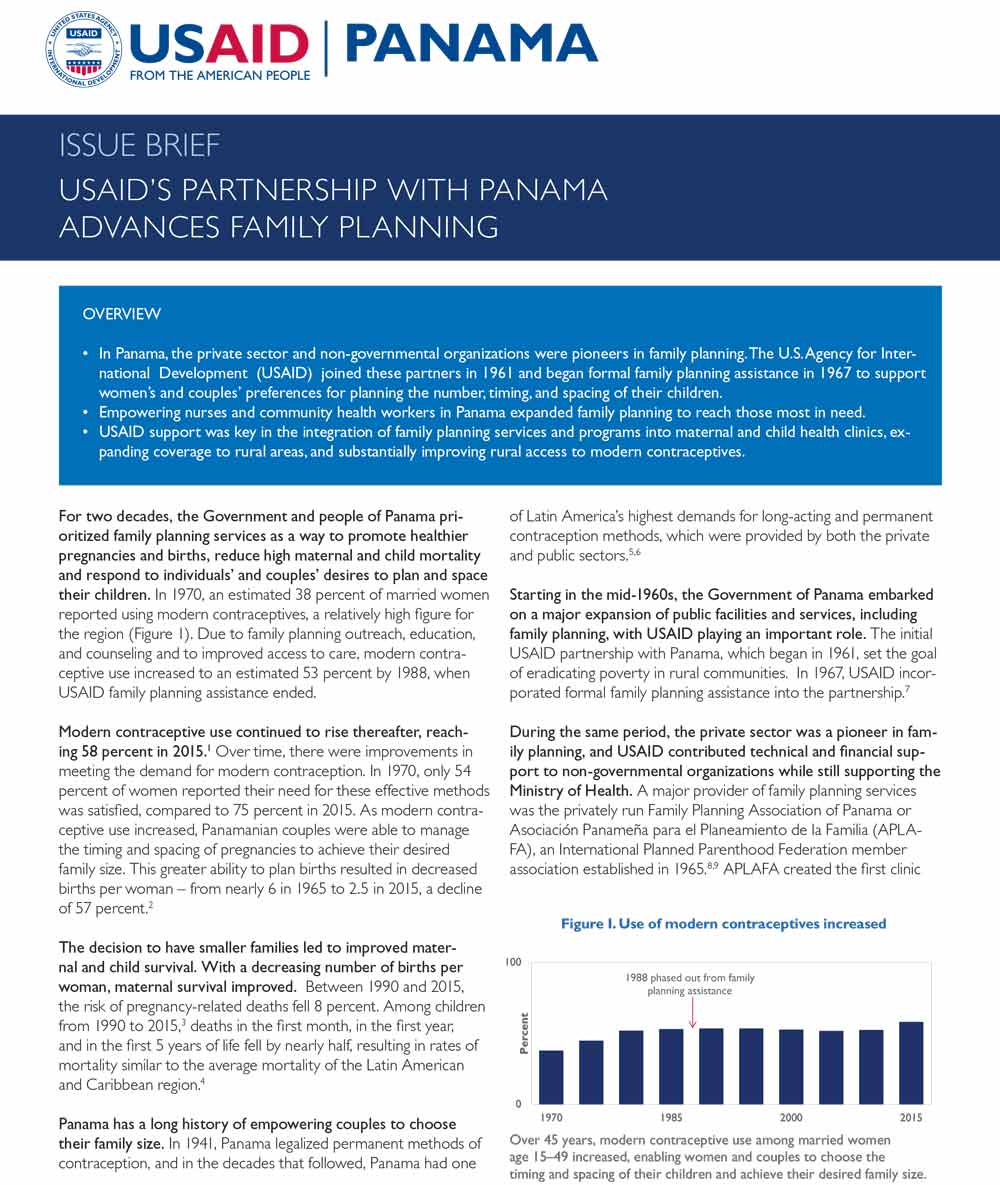Home » What We Do » Global Health » Family Planning » Resources » USAID's Partnership with Panama Advances Family Planning
- What We Do
- Agriculture and Food Security
- Democracy, Human Rights and Governance
- Economic Growth and Trade
- Education
- Ending Extreme Poverty
- Environment and Global Climate Change
- Gender Equality and Women's Empowerment
- Global Health
- Water and Sanitation
- Working in Crises and Conflict
- U.S. Global Development Lab
The Government and people of Panama prioritized family planning services as a way to promote healthier pregnancies and births, reduce high maternal and child mortality and respond to individuals’ and couples’ desires to plan and space their children.
Overview
- In Panama, the private sector and non-governmental organizations were pioneers in family planning. The U.S. Agency for International Development (USAID) joined these partners in 1961 and began formal family planning assistance in 1967 to support women’s and couples’ preferences for planning the number, timing, and spacing of their children.
- Empowering nurses and community health workers in Panama expanded family planning to reach those most in need.
- USAID support was key in the integration of family planning services and programs into maternal and child health clinics, expanding coverage to rural areas, and substantially improving rural access to modern contraceptives.
- In 1970, an estimated 38 percent of married women reported using modern contraceptives, a relatively high figure for the region. Due to family planning outreach, education, and counseling and to improved access to care, modern contraceptive use increased to an estimated 53 percent by 1988, when USAID family planning assistance ended.








Comment
Make a general inquiry or suggest an improvement.